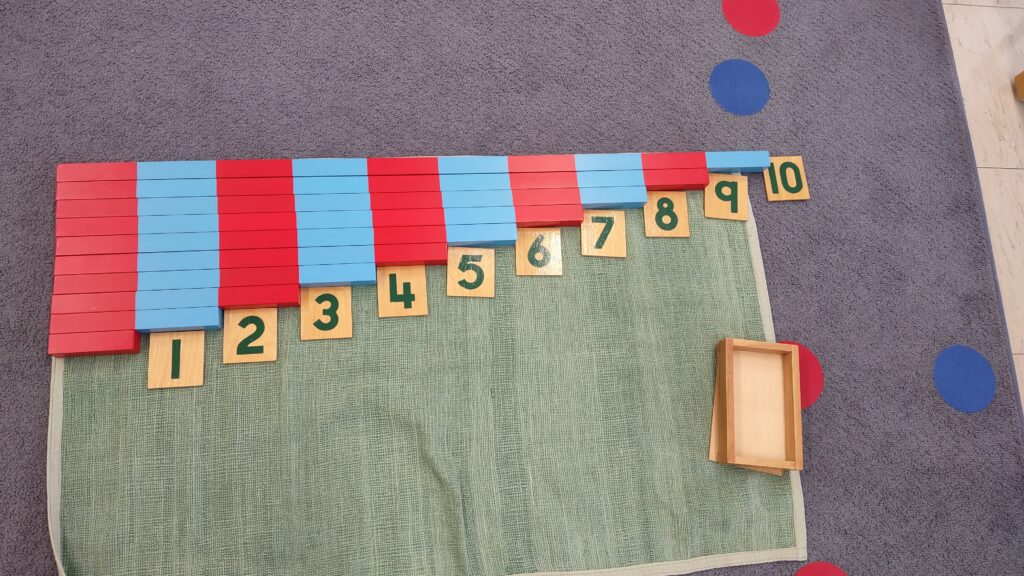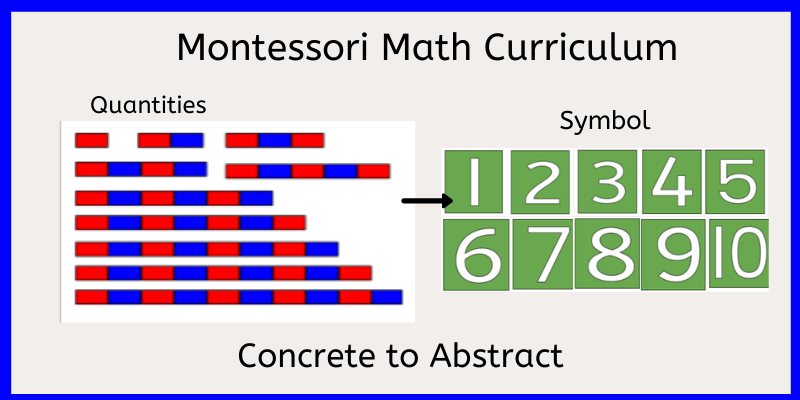Table of Contents
Montessori Math 1 to 10 is all about helping little ones truly understand numbers, not just memorize them. Through hands-on materials and a gentle, step-by-step approach, children get to explore numbers in a way that feels natural and fun. It starts with what they can see and touch, like counting rods and colorful beads, and slowly moves toward more abstract ideas. The result? Confident, curious kids who actually enjoy learning math.
Montessori Math 1 to 10: A Step-by-Step Guide to Teaching Numbers the Montessori Way
When it comes to teaching preschool math, the Montessori method offers a thoughtful and effective approach. One of the most essential concepts to understand is the order of sequence. By introducing math concepts in a specific order, children grasp abstract ideas with more ease and confidence.
In this guide, we’ll walk you through the 5 foundational Montessori math materials that introduce children to numbers 1 to 10. Each material plays a unique role in building number sense through hands-on exploration.
Basic Montessori Mathematical Concepts
Before diving into the materials, here are a few key principles to keep in mind:
- Concrete Before Abstract: Always introduce tangible materials before moving to symbolic or abstract concepts.
- Teach Quantities First: Let the child experience numbers through objects before introducing number symbols.
- Attached Before Loose Quantities: Start with materials where quantities are fixed (like Number Rods), then progress to loose parts.
- Follow the Sequence: Always introduce numbers in order—1, 2, 3… Avoid jumping between numbers randomly.
The 5 Essential Montessori Math Materials for Numbers 1 to 10
1. Number Rods: Understanding Quantity
Number Rods are the first Montessori math material introduced. These ten wooden rods increase in length to represent quantities from 1 to 10. The rods alternate between red and blue segments, helping children count with ease and accuracy.
Since the rods present attached quantities, children don’t need to recognize number symbols to engage with this activity. Start with just a few rods and count each segment together. Gradually introduce more rods until reaching 10. Encourage daily practice to build familiarity.
2. Sandpaper Numbers: Introducing Symbols
Once children are comfortable with counting quantities, it’s time to introduce the number symbols using Sandpaper Numbers.
Montessori uses the Three-Period Lesson to teach symbols:
The Three-Period Lesson
- Naming – Trace one number at a time using two fingers while naming it aloud. Let the child repeat after you.
- Recognition – Lay out three numbers and ask the child to identify them. For example, “Show me 2.”
- Remembering – Turn the numbers face down, flip one over, and ask, “What number is this?”
Begin with 1–3 and gradually add new numbers as the child becomes confident. Always maintain the order of sequence.
3. Number Rods with Cards: Matching Quantity to Symbol

Now that the child understands both quantity and symbol, it’s time to combine them. Replace Sandpaper Numbers with Number Cards (wooden or cardstock versions) labelled 1–10.
Invite the child to count each rod and match it with the correct number card. This activity connects attached quantities to loose symbols, reinforcing understanding through a concrete-to-abstract progression.
4. Spindle Boxes: Exploring Loose Quantities
Spindle Boxes are a great way to introduce loose quantities and the concept of zero. The boxes are divided into slots labelled 0–9, and children are given 45 wooden spindles.
The child counts and places the correct number of spindles into each slot. If they miscount, they’ll notice extra or missing spindles at the end. This self-correcting nature encourages independence and focus.
Remind the child to count and pick up the spindles at the same pace to maintain accuracy.
5. Cards and Counters: Mastering Loose Symbols and Quantities
In this activity, children work with both loose symbols (number cards) and loose quantities (counters). This is a more abstract step and helps children solidify their number knowledge.
Lay out number cards in sequence from 1–10. Then invite the child to count and place the correct number of counters under each card.
Be patient—children may count and place counters at different speeds. Gentle reminders and consistent practice help build their rhythm and confidence.
Short Bead Stair (Coloured Beads)
The Short Bead Stair (also known as Coloured Beads) adds more variety and fun to number practice. Each quantity from 1 to 9 is represented by a specific colour of bead bar—1 is red, 2 is green, 3 is pink, and so on.
These beads become foundational for more complex Montessori math activities later on.
Conclusion: Why Montessori Math 1 to 10 Works
Teaching math the Montessori way is about guiding children from the concrete to the abstract in a logical, sequential order. When children start by feeling and counting tangible objects, they form a strong number sense. By the time they encounter symbols, these abstract ideas already hold meaning.
DIY versions of these materials can still be incredibly effective if made thoughtfully. Remember to always:
- Begin with quantities before introducing symbols
- Present activities in sequential order
- Offer daily practice to build mastery
With just these five materials, your child can develop a solid foundation in early math—and enjoy the process along the way.
Focus Keyword: Montessori Math 1 to 10

